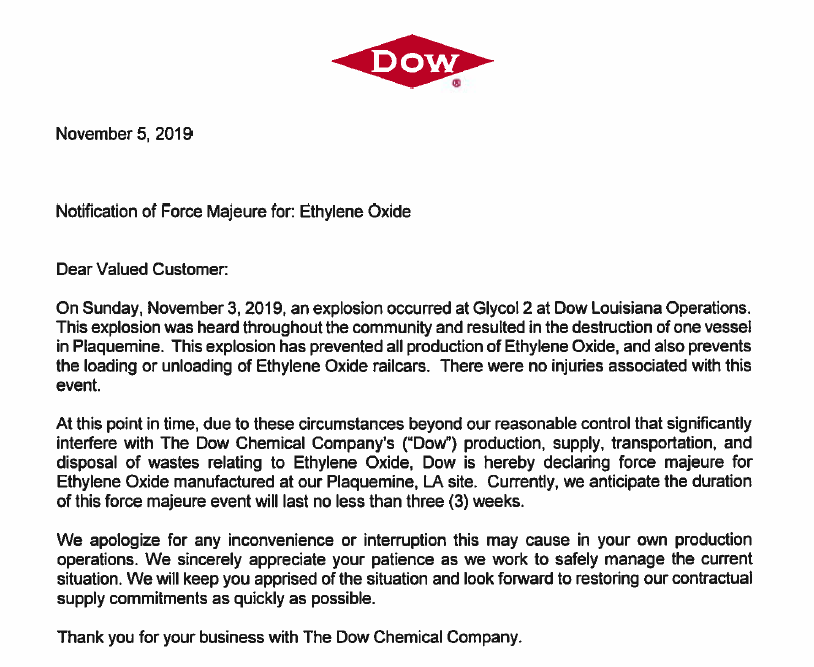Contents:


Information is from sources deemed reliable on the date of publication, but Robinhood does not guarantee its accuracy. When companies form, they often have to designate a par value for their stock. It represents the value of the stock in the company’s charter or articles of incorporation.
- In terms of payment and liquidation order, bondholders are ahead of preferred shareholders, who in turn are ahead of common shareholders.
- Where the difference between the shares issued and the shares outstanding is equal to the number of treasury shares.
- It’s found on the balance sheet, which is one of three financial documents that are important to all small businesses.
- Hence, the market value of equity will typically be greater in comparison to the book value of equity.
- These must be deducted from stockholders’ equity, as they’re owned by the company.
- You can learn more about the standards we follow in producing accurate, unbiased content in oureditorial policy.
Subtract the liabilities from the assets to reveal the total shareholders’ equity. Firstly, gather the total assets and the total liabilities from the balance sheet. As referred above, stockholders’ equity can be calculated by taking the total assets of a company and subtracting liabilities. This formula is known as the investor’s equation where you have to compute the share capital and then ascertain the retained earnings of the business. With various debt and equity instruments in mind, we can apply this knowledge to our own personal investment decisions. Although many investment decisions depend on the level of risk we want to undertake, we cannot neglect all the key components covered above.
Additional reading
Equity simply refers to the difference between a company’s total assets and total liabilities. It can be calculated only if both net income and equity of the company are positive in number. The current income is estimated only after the dividends are issued to the preferred shareholders and interest to lenders. The net income is calculated with, only to the common stockholders’ equity. The common average stockholders’ equity is computed by the average of the beginning and end of the year. Stockholders’ equity is the money that would be left if a company were to sell all of its assets and pay off all its debts.
Over time, the company’s shares will change in value; the company may also issue more shares or buy some back from investors. All these things affect stockholders’ equity, as do the assets and liabilities a company accrues over time. Shareholder equity can also indicate how well a company is generating profit, using ratios like the return on equity . This shows you the business’s net income divided by its shareholder equity, to measure the balance between investor equity and profit. It’s used in financial modeling to forecast future balance sheet items based on past performance.
What is on a statement of stockholders’ equity?
In accounting, shareholders’ equity is the balancing figure between assets and liabilities. This amount is known as the residual interest in the company attributable to its shareholders. In simpler words, it is the amount stockholders will receive when all liabilities get repaid from the company’s assets. Preferred stock, common stock, additional paid‐in‐capital, retained earnings, and treasury stock are all reported on the balance sheet in the stockholders’ equity section. Information regarding the par value, authorized shares, issued shares, and outstanding shares must be disclosed for each type of stock.

If equity is positive, the company has enough assets to cover its liabilities. Stockholders’ equity refers to the assets remaining in a business once all liabilities have been settled. Conceptually, stockholders’ equity is useful as a means of judging the funds retained within a business. If this figure is negative, it may indicate an oncoming bankruptcy for that business, particularly if there exists a large debt liability as well. Full BioCierra Murry is an expert in banking, credit cards, investing, loans, mortgages, and real estate.
Treasury stock is not an asset, it’s a contra-stockholders’ equity account, that is to say it is deducted from stockholders’ equity. Treasury stock is most often carried on the balance sheet at cost. If you know the assets and the owners’ equity of a business, how can you measure its liabilities?
The statement of shareholder equity tells you the value of a business after investors and stockholders are paid out. Shareholder equity, also called stockholder equity, is the difference between a company’s assets and liabilities on their balance sheet. Companies will often include that calculation at the bottom of their assets and liabilities as well. Since most investors are common shareholders, it’s not uncommon to see this formula adjusted to account for any profit that’s earmarked for the payment of preferred share dividends. While there are exceptions – e.g. dividend recapitalization – if a company’s shareholders’ equity remains negative and continues to trend downward, it is a sign that the company could soon face insolvency.
Statement of Stockholders’ Equity
It also highlights how this figure can play an important role in determining whether or not a company has enough capital to meet its financial obligations. Overall, this article provides readers with a detailed definition of stockholders’ equity along with the most common misconceptions about the value. Negative equity can also occur when there is not enough money realized from sales to cover the company’s debt obligations. This type of equity can come from different sources, including issuing new shares or converting debt to equity.
How to Calculate Ending Stockholders’ Equity – The Motley Fool
How to Calculate Ending Stockholders’ Equity.
Posted: Sat, 04 Feb 2017 11:49:12 GMT [source]
Each investor should evaluate their ability to invest long term, especially during periods of downturn in the market. Investors should not substitute these materials for professional services, and should seek advice from an independent advisor before acting on any information presented. The first formula of Stockholder’s Equity can be interpreted as the Number of Assets left after paying off all the Debts or Liabilities of business. Positive Stockholder’s Equity represents the company has sufficient assets to pay off its debt. In the same way, Negative Stockholders Equity represent the weak financial health of the company. If a balance sheet is not available, summarize the total amount of all assets and subtract the total amount of all liabilities.
As stated above, https://1investing.in/ constitutes any investment by the shareholders. It may include common or preferred stock purchased by shareholders when the company issues shares. The goal of investing in a corporation is for stockholders to accumulate wealth as a result of the company making a profit. The ratio looks at how well the investments of preferred and common stockholders are being used to reach that goal. When a company repurchases its own stock from shareholders, it becomes treasury stock held by the company.

Let’s see some simple to advanced examples to better understand the stockholder’s equity equation calculation. Paid-in Share CapitalPaid in Capital is the capital amount that a Company receives from investors in exchange for the stock sold in the primary market, including common or preferred stock. This considers the sale of stock that an issuer directly sells to the investor & not the sale of stock on the secondary market between investors. If a business has more liabilities than assets or does not have enough stockholders’ equity to cover its debt, then it will need to turn to outside sources of capital. If a company does not have enough cash flow or assets to cover their liabilities, they are in what is known as “negative equity.” The value of their assets minus the value of their liabilities.
Treasury shares continue to count as issued shares, but they are not considered to be outstanding and are thus not included in dividends or the calculation of earnings per share . Treasury shares can always be reissued back to stockholders for purchase when companies need to raise more capital. If a company doesn’t wish to hang on to the shares for future financing, it can choose to retire the shares. Retained earnings are a company’s net income from operations and other business activities retained by the company as additional equity capital.
Total assets can be categorized as either current or non-current assets. Current assets are those that can be converted to cash within a year, such as accounts receivable and inventory. Long-term assets are those that cannot be converted to cash or consumed within a year, such as real estate properties, manufacturing plants, equipment, and intangible items like patents.
- All funds used for this Program will be taken from your Stash Banking account†.
- When a company issues equity or preferred shares, the company receives cash, which is an asset.
- It’s used in financial modeling to forecast future balance sheet items based on past performance.
- Shareholder’s equity includes anything a company owns or owes.
how to calculate sales taxholders’ equity is important for a company because it demonstrates the amount of money that would be available to either pay off liabilities or reinvest in the business. Negative equity can arise if the company has negative retained earnings, meaning that their profits were not strong enough to cover expenses. Often, this summary is accompanied by income statements and cash flow statements to provide a full picture of the company’s financial situation. On the other hand, liabilities are the total of current liabilities (short-term liabilities) and long-term liabilities. Current liability comprises debts that require repayment within one year, while long-term liabilities are liabilities whose repayment is due beyond one year. However, debt is also the riskiest form of financing for companies because the corporation must uphold the contract with bondholders to make the regular interest payments regardless of economic times.
Stockholders’ equity is the book value of shareholders’ interest in a company; these are the components in its calculation. Compute the total amount of stockholders equity in the balance sheet. Explain how to express each balance sheet amount as a percentage of total assets. For instance, when a company issues a dividend, the stockholders’ equity may decrease.
Schwab Reports Record Full-year Earnings Per Share – AboutSchwab
Schwab Reports Record Full-year Earnings Per Share.
Posted: Wed, 18 Jan 2023 08:00:00 GMT [source]
A statement of shareholder equity can tell you if you should borrow more money to expand, whether you need to cut costs or whether you’ll make a profit on a sale. It can also help you attract outside investors who will undoubtedly want to see that statement prior to injecting capital into your enterprise. The primary function of stockholder’s equity is to evaluate the worth of a company and whether a company is a safe or risky investment. Beyond that, we can take a look at a company’s balance sheet to see their liabilities and stockholder’s equity to determine how they are performing as a business and where they spend their money. There are numerous ways to use the information on a balance sheet to gain further information on a company’s financial management, and stockholder’s equity is but one in a long list.
Stockholder’s Equity is used for the calculation of book value of shares of the company. It is used to see how market value is priced with reference to the book value of shares of the company. Look for the stockholders’ equity subtotal in the bottom half of a company’s balance sheet; this document already aggregates the required information. Deducting Treasury StockTreasury Stock is a stock repurchased by the issuance Company from its current shareholders that remains non-retired. Moreover, it is not considered while calculating the Company’s Earnings Per Share or dividends. While this figure does include money that could be returned to the owners of the company, it also includes items like depreciation and amortization, which cannot be directly distributed to shareholders.
This is the date on which the list of all the shareholders who will receive the dividend is compiled. Throughout this series of financial statements, you can download the Excel template below for free to see how Bob’s Donut Shoppe uses financial statements to evaluate the performance of his business. Here’s an overview of what you may find in the assets and liability sections of the balance sheet. In short, there are several ways to calculate stockholders’ equity , but the outcome may not be of particular value to the shareholder. StockholdersA stockholder is a person, company, or institution who owns one or more shares of a company. They are the company’s owners, but their liability is limited to the value of their shares.
